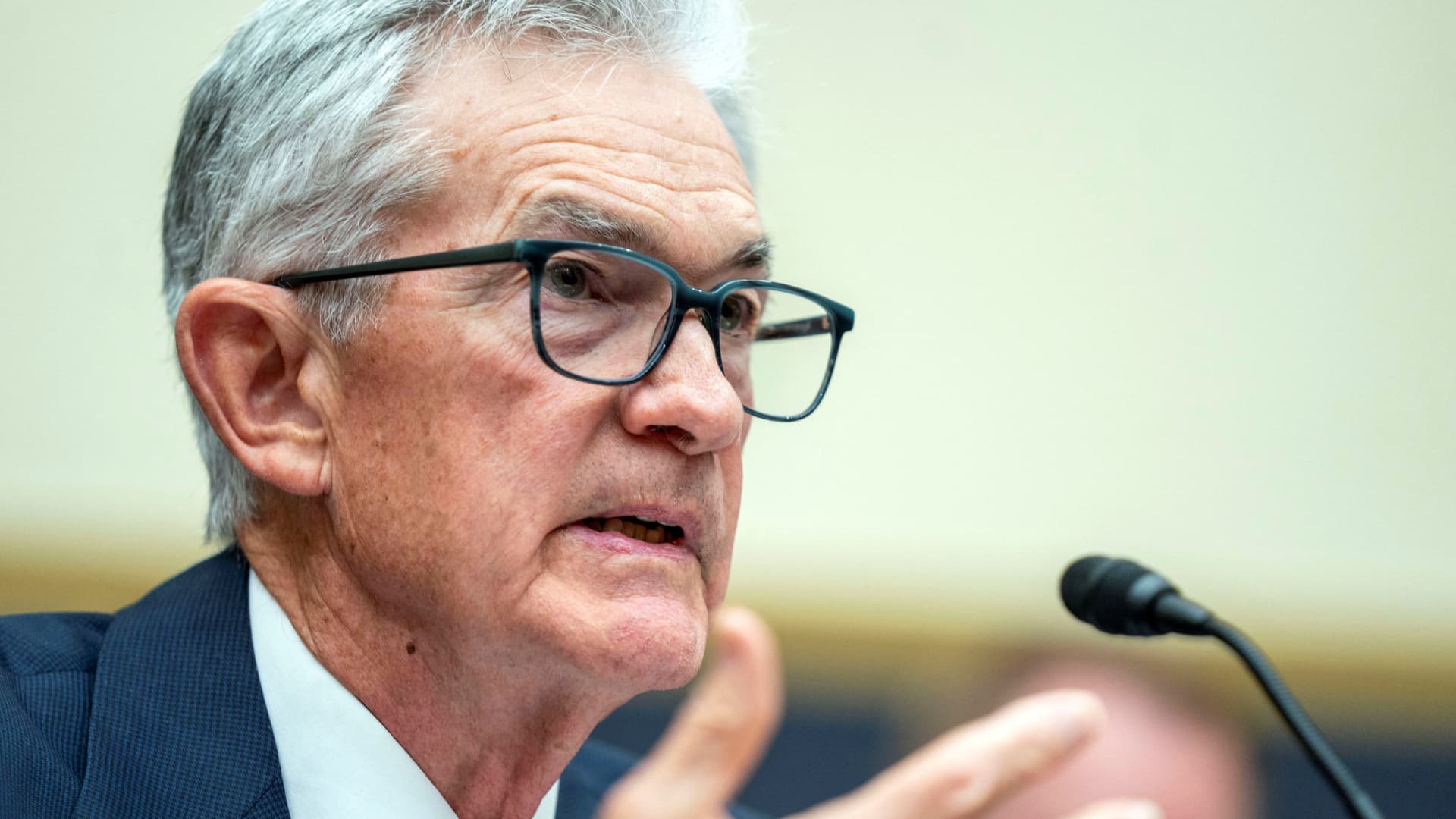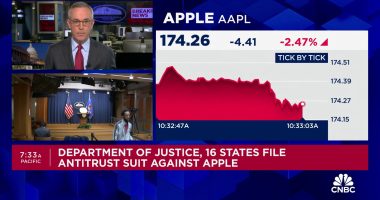
Federal Reserve Chair Jerome Powell speaks during a House Financial Services Committee hearing on the “Federal Reserve’s Semi-Annual Monetary Policy Report” on Capitol Hill in Washington, U.S., March 6, 2024.
Bonnie Cash | Reuters
If there was any doubt before, Federal Reserve Chair Jerome Powell has pretty much cemented the likelihood that there won’t be interest rate reductions anytime soon.
Now, Wall Street is wondering if the central bank will cut at all this year.
That’s because Powell on Tuesday said there’s been “a lack of further progress” on lowering inflation back to the Fed’s 2% target, meaning “it’s likely to take longer than expected” to get enough confidence to start easing back on policy.
“They’ve got the economy right where they want it. They now are just focused on inflation numbers. The question is, what’s the bar here?” said Mark Zandi, chief economist at Moody’s Analytics. “My sense is they need two, probably three consecutive months of inflation numbers that are consistent with that 2% target. If that’s the bar, the earliest they can get there is September. I just don’t see rate cuts before that.”
With most readings putting inflation around 3% and not moving appreciably for several months, the Fed finds itself in a tough slog on the last mile toward its goal.
Market pricing for rate cuts has been highly volatile in recent weeks as Wall Street has chased fluctuating Fed rhetoric. As of Wednesday afternoon, traders were pricing in about a 71% probability that the central bank indeed most likely will wait until September, with the implied chance of a July cut at 44%, according to the CME Group’s FedWatch gauge.
As for a second rate cut, there was a tilt toward one in December, but that remains an open question.
“Right now, my base case is two — one in September and one in December, but I could easily see one rate cut, in November,” said Zandi, who thinks the presidential election could factor into the equation for Fed officials who insist they are not swayed by politics.
‘Real risk’ of no cuts until 2025
The uncertainty has spread through the Street. The market-implied odds for no cuts this year stood around 11% on Wednesday, but the possibility can’t be ignored at this point.
For instance, Bank of America economists said there is a “real risk” that the Fed won’t cut until March 2025 “at the earliest,” though for now they’re still going with a December forecast for the one and only cut this year. Markets at the onset of 2024 had been pricing in at least six quarter-percentage point reductions.
“We think policymakers will not feel comfortable starting the cutting cycle in June or even September,” BofA economist Stephen Juneau said in a client note. “In short, this is the reality of a data-dependent Fed. With the inflation data exceeding expectations to start the year, it comes as little surprise that the Fed would push back on any urgency to cut, especially given the strong activity data.”
To be sure, there’s still hope that the inflation data turns lower in the next few months and gives the central bank room to ease.
Citigroup, for example, still expects the Fed to begin easing in June or July and to cut rates several times this year. Powell and his fellow policymakers “will be pleasantly surprised” by inflation data in coming months, wrote Citi economist Andrew Hollenhorst, who added that the Fed “is poised to cut rates on either slower year-on-year core inflation or any signs of weakness in activity data.”
Elsewhere, Goldman Sachs pushed back the month that it expects policy to ease, but only to July from June, as “the broader disinflationary narrative remains intact,” wrote Jan Hatzius, the firm’s chief economist.
Danger looms
If that is true, then “the pause on rate cuts would be lifted and the Fed would move ahead,” wrote Krishna Guha, head of the global policy and central bank strategy team at Evercore ISI. However, Guha also noted the wide breadth of policy possibilities that Powell opened in his remarks Tuesday.
“We think it still leaves the Fed uncomfortably data-point dependent, and highly vulnerable to being skittled from three to two to one cut if near-term inflation data does not cooperate,” he added.
The possibility of a stubborn Fed raises the possibility of a policy mistake. Despite the resilient economy, higher rates for longer could threaten labor market stability, not to mention areas of the finance sector such as regional banks that are susceptible to duration risk posed to fixed income portfolios.
Zandi said the Fed already should have been cutting with inflation well off the boil from its mid-2022 highs, adding that factors related to housing are essentially the only thing standing between the central bank and its 2% inflation goal.
A Fed policy mistake “is the most significant risk to the economy at this point. They’ve already achieved their mandate on full employment. They’ve all but achieved their mandate on inflation,” Zandi said.
“Stuff happens, and I think we need to be humble here regarding the financial system,” he added. “They run the risk they are going to break something. And to what end? If I were on the committee, I would be strongly arguing we should go already.”
Read More: World News | Entertainment News | Celeb News
CNBC








